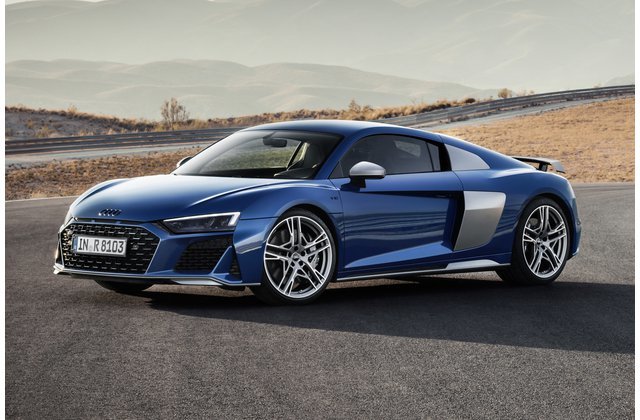Ferdinand Piëch: VW Beetle heir who transformed the Volkswagen Group dies at 82
Porsche Grandson ran the WV Group Like North Korea

Ferdinand Piëch, the man who turned around the fortunes of German automaker, Volkswagen, has died at the age of 82. The news was announced by his wife, Ursula Piëch, on Monday, 26th 2019. Piëch, whose father designed the Volkswagen Beetle for Adolf Hitler, died when he slumped suddenly at a restaurant in Rosenheim, Bavaria, during a dinner outing with his wife.
Grandson of famous carmaker, Ferdinand Porsche, Piëch served as Chairman of the Volkswagen Group from 1993, and was on the company’s supervisory board, until his resignation in 2015.
Early Life and Starting out with Porsche
Born on the 17th of April, 1937 in Vienna, Austria to Louise Porsche and Anton Piëch, Ferdinand Piëch attended and graduated from the Swiss Federal Institute of Technology, Zurich, Switzerland in 1962 with a degree in mechanical engineering.
As a child, Piëch would often play around within the expanse of the Hitler commissioned Volkswagen plant, where his father designed and worked on the Volkswagen Beetle. Writing in his memoir, Piëch told of how he once stayed hidden under the table as his father, grandfather and some Nazi officers talked about the German V2 rocket. Expressing interest in automobile design and engineering, Piëch centered his Master’s thesis on the development of a Formula One engine.
Coincidentally, his grandfather’s company, Porsche, was at the time involved in Formula One racing and had just designed an 8-cylinder engine for the Porsche 804 (a single seat, open-wheeled racing car). Piëch promptly joined Porsche, where he helped work on the modelling and development of the Porsche 906. The development of the 906 (and successive) models, in turn, led to that of the very successful Porsche 917 model.
In 1971, having spent 8 years working with Porsche, Piëch moved to Ingolstadt to work for Audi.
Transforming A Company on the Brink

Having worked his way up the ladder at Audi from 1975 when he joined, Piëch was appointed chairman of the Management Board of Audi’s parent company, Volkswagen AG, in 1993, succeeding Carl Hahn.
With the company’s finance in tatters and only three months away from bankruptcy, it seemed Piëch was faced with a mission not necessarily impossible, but certainly nigh improbable to accomplish. Volkswagen had so far failed to keep up with its competitors and was beset by debts and the prospect of making up to $1 billion in losses in 1992. Such was its dire state that there were strong suggestions of shutting down the company’s dealerships in North America.
Already known for his “hard-punching” and uncompromising managerial style, Piëch saw to the forceful removal of several board members that he considered organizational obstacles. With board members out of the way, he was able to firmly establish control, make executive changes, and demand design modifications from the engineering department.
One of Piëch’s significant moves to turn Volkswagen’s fortune around was the creation of a modular platform technique which enabled Audi, Skoda, and Volkswagen automobiles to share a majority of similar components. With this move substantially improving the company’s economies of scale and financial health, Piëch proceeded to assimilate luxury brands like Bugatti, Lamborghini, and Bentley –all within a year.
Nine years after he took over, Volkswagen went from having a $1 billion fiscal deficit to making over $3 billion annually in profits, and vying with Toyota for the position of the World’s top carmaker.
A Brilliant Despot
Sharp-tongued and hard-nosed, Piëch is acknowledged by several people who worked closely with him as one who ruled with a stone-cold iron-fist. It is a fact he has admitted to in his memoir when he said, in reference to his appointment as the Volkswagen AG board chairman, that “Only when a company is in severe difficulty does it let someone like me in.”
Describing Volkswagen’s automobile factories under Piëch’s leadership, German magazine, Der Spiegel, once referred to working conditions as being like “North Korea without Labor camps”.
Such was the absoluteness of his authority that during one meeting with his engineers, he gave a seemingly impracticable gap specification between the car door and body frame with a timeline of just six weeks, whilst threatening to fire everybody if they failed to deliver the target.
Piëch’s habit of giving his engineers daunting targets has seen certain bars raised and set. For example, the Bugatti Veyron was fitted with a W16, quad-turbo 1000hp engine just to “prove a point”. It proceeded to hold the record of the “fastest production car” for a decade, hitting a speed of up to 400km/hr. Subsequent models of the Bugatti did go on to surpass the 400km/hr. mark, hitting speeds of up to 432km/hr.
While not all are in agreement with his style, there’s unanimous admission that it gets the job done, and it gets result.
Titan of The Car World
Piëch’s contributions and achievements in the automobile industry is no mean feat. By taking a brand tottering on the edge of insolvency to establishing that brand as one of the world’s largest auto companies in the world (sales-wise), Ferdinand Piëch can stake his claim alongside other legendary automotive names like Henry Ford, Kiichiro Toyoda and Gottlieb Daimler.
And, as Andy Palmer, CEO of Aston Martin, put it, Ferdinand Piëch was a “titan of the car world”.







